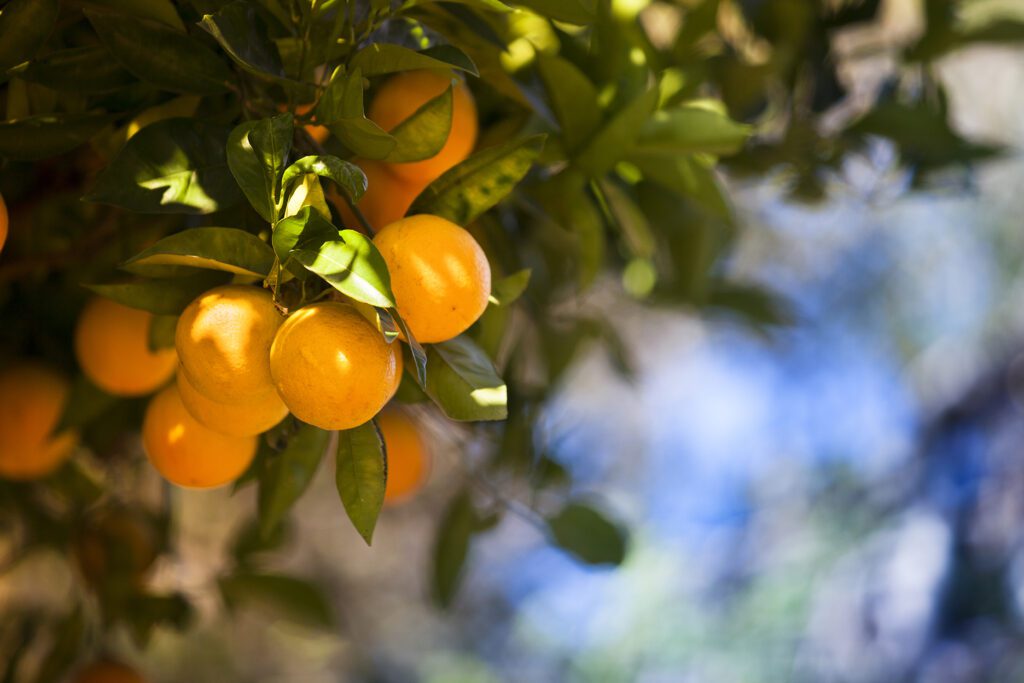Despite Expected Drop in Production, Growers Encouraged That Mexico, Brazil Face Same Challenges
by TERESA SCHIFFER
This year’s citrus harvest wasn’t exactly one for the record books, but overall, it was respectable. Coming in at 67.65 million boxes of Florida oranges produced and marketed, growers were satisfied with their haul. There were some issues early in the season, such as an unexpected fruit drop among Valencia oranges, but the coronavirus pandemic affected the citrus market in a fortuitous way. The demand for orange juice skyrocketed amid pandemic fears. Long esteemed for its positive impact on the immune system due to its high Vitamin C content, O.J. became a star player late in the citrus season.
The U.S. Department of Agriculture releases its first forecast October 9, after the press deadline for this edition of Central Florida Ag News, but local experts are already making their predictions.
Elizabeth Steger, president of Citrus Consulting International of Daytona Beach and renowned citrus forecaster whose predictions for each citrus season are followed by growers throughout the state, has taken a dim look at the upcoming season.
Steger is predicting an 8.4 percent decrease in citrus production for the 2020-21 season – down from 67.65 million boxes to 62 million. The reasons for this estimated decline include the long-standing battle with citrus greening disease plus several other factors. For one thing, Florida’s population of orange trees is getting older, which means a decrease in fruit production. This is primarily due to growers’ hesitation to plant new groves after losing trees to greening over the past 15 years. That trend is changing, as the pace of replanting is going up, but it will take another couple of years for the younger trees to make a significant difference in crop yields.
It should be noted that citrus greening, also known as Huanglongbing or HLB, isn’t going away anytime soon, either. Growers shouldn’t be hanging their hopes on any cure in the near future, but instead be looking at ways of controlling or eradicating the psyllids that spread the harmful pathogens. Even when a tree has apparently conquered the devitalizing condition, reinfection is still possible.
Another factor to consider is the reduced caretaking of groves that took place during the last season. Low prices on citrus at the start of the 2019-20 season forced many Florida growers to reduce the amount of pesticide sprays, fertilizer, and other caretaking expenses in order to cut production costs. This reduced caretaking can have repercussions not only in the next season, but it can also decrease fruit yields for years to come.
There were also multiple spring blooms in citrus groves this year – which is not good for citrus production. Growers want their trees to produce a single flower bloom in the spring. The year’s fruit crop then develops from that bloom. However, sometimes weather conditions can cause multiple blooms during springtime, which leads to diminished fruit production. That’s exactly what happened this year.
For the most part, growers are in agreement with Steger’s estimates. Fran Becker, Senior VP of Fruit Procurement at Peace River Citrus Products, is hoping that at least the weather cooperates this year. Citrus trees require a certain minimum number of chilling hours to induce blooms, Becker says, and last year Polk County just barely reached the threshold. Many groves in South Florida were not so lucky. In addition to sufficient chill hours, Becker would also like to see plenty of sunshine and no major storms to facilitate fruit production.
The silver lining to all this bleak news is that Mexico and Brazil are also expected to experience reduced citrus production in the coming year, due mainly to a combination of unusually high temperatures and below-average rainfall. That’s good news for Florida growers, as there will be less competition in the market for citrus. Fewer oranges on the market combined with an increased demand for healthy foods, including oranges, orange juice, and other citrus products, should fuel an increase in the price Florida growers can command for their crops.
Becker is optimistic that prices will hold steady going into the new season, as they rebounded well after a disappointing start last year. The cash market was oversupplied heading into the 2019-20 season, but once the coronavirus drove up demand for orange juice, the off-season prices were pleasingly profitable. If current trends continue, with an overall decrease in the global supply of citrus combined with an increased demand for citrus products, things should balance out in such a way that Florida growers won’t take a hit economically.

